#trappist monk
Text


Dear Hawk, (chapter 4, on ao3)
Jan 21, 1969
Skippy,
What did you write me? What does Lucy know, and how long has she known it? At least tell me that, before I humiliate myself confronting her.
Are you blackmailing me into honesty? I’ve never lied to you. Omitted maybe, but never lied. Not about anything important.
Here’s a truth. I turn 50 this year. The last time we saw each other (before the last), I was the same age as you are now, which is unsettling to think about. It feels like an eon has passed, and yet I'm frozen in place.
I keep waiting… for things to start making sense. My life. The choices I’ve made and what they’ve led to. Always in pursuit of that “goal”, and now… not only do I not know what the goal is anymore, but it feels like every single day is a step in the wrong direction. I am treading water. Barely. Seeing you again made that painfully clear.
You asked me once if I liked my life this way, and I thought I had it all figured out. The goal, the plan, the path to freedom. How is it that I'm eleven years ahead of you and still running to catch up?
Skippy. This is the fifth letter I've started. The others were full of misdirection, innuendo and half-truths. Let this be honest enough. You already have me stripped to the bone.
You do know me. I wonder if I ever knew you, or just the person I wanted to see. So much about you surprised me, when we saw each other in November. My memory of you has stayed frozen in my mind. Instead, you’ve changed, you’ve lived, and I’ve found myself cursing those lost years. We've missed so much. We don't have to keep missing it.
Tell me about — anything. Your mentor. How you met. Your time in Seminary. Your life now. What you eat for breakfast and what time you sleep and what you’re reading. I don’t have faith in the prison library, so name something and I’ll send it. I want to know you. Everything about you. I miss you telling me about your family, even if I was too distracted sometimes to listen.
Yours.
p.s. I’m sending this along with the book you “loaned” me ages ago. Consider this a loan in return. Keep it safe, I expect it back.
#The letter arrives tucked inside a worn hardback copy of The Seven Storey Mountain --#the 1948 autobiography of Thomas Merton (an American Trappist monk and priest) that Tim was seen reading in 1953#fellow travelers#dearhawk#redrites#fellowtravelersedit#ftfic#fellow travelers fics
25 notes
·
View notes
Text
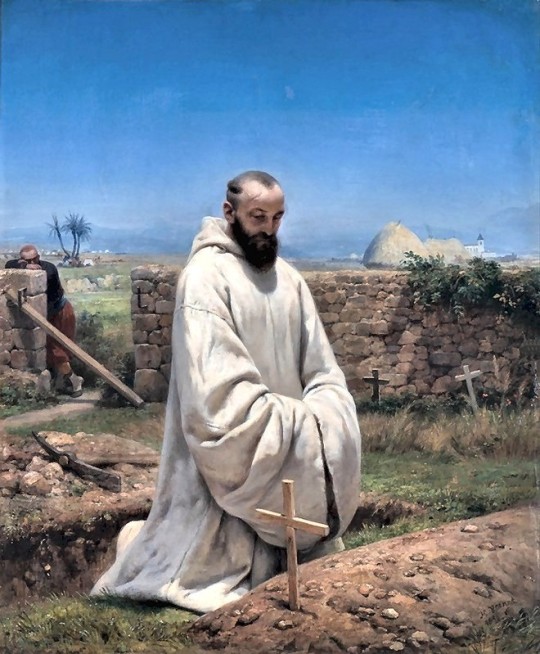
Horace Vernet, Le zouave trappiste, 1856
123 notes
·
View notes
Text
A Litany of the Person
“image of God
born of God’s breath
vessel of divine Love
after his likeness
dwelling of God
home of the Infinite Majesty
abiding in the Son
called from eternity
life in the Lord
temple of the Holy Spirit
branch of Christ
receptacle of the Most High
wellspring of Living Water
heir of the kingdom
the glory of God
abode of the Trinity.
God sings this litany
eternally in his Word.
This is who you are.”
~From the Abbey of Gethsemani
#Litany of the Person#Abbey of Gethsemani#Trappist monks#Christian#Who we are in Christ#Lord Jesus#God#Holy Trinity#Who you are
12 notes
·
View notes
Text
'The challenge is, as Rafael puts it, that “yes, all of humanity suffers, but there are so few who know how to suffer.” For Rafael, to suffer well means to take up the cross God is giving us, not the one we choose. Learning to suffer and learning to wait go hand in hand, because it takes time and stillness to be able to discern and embrace God’s will for our lives.'
#Trappist#monastic life#monasticism#Catholic#Christianity#Catholicism#religion#faith#saint#saints#monk#monks#religious life#cross#waiting#patience#suffering#wisdom#God#God's love#love of God#love#spirituality#illness#diabetes#Spain#Jesus#God's plan#God's will
15 notes
·
View notes
Text
youtube
📍Trappist Monastery, Jordan, Guimaras
🗓️January 16, 2023
❓Dipping keychained sinukuan tree branches in holy water inside Our Lady of the Philippines Monastery.
The sinukuan tree is found in the province of Guimaras, Philippines and nearby provinces. It is said to be a miracle tree because its branches have a natural cross inside of them, no matter how they are cut. The cross is said to represent the crucifixion of Jesus Christ, and the sinukuan tree is therefore considered to be a sacred tree. There are crucifixes made out of sinukuan for this reason.
It is believed to give good luck when carried or if placed inside a wallet.
More absurd beliefs say they help the owner gain the respect of other people and make them give in to his request.
⁉️There was an ongoing mass when I filmed this video and the best word that describes that moment was “solemn”, very solemn almost reflective. Not really sure if it is a mass or simply a prayer, but there are monks on the left side (not seen in the video) and a few churchgoers. It looks very simple and austere, there’s music like some kinda chant but still very quiet overall.

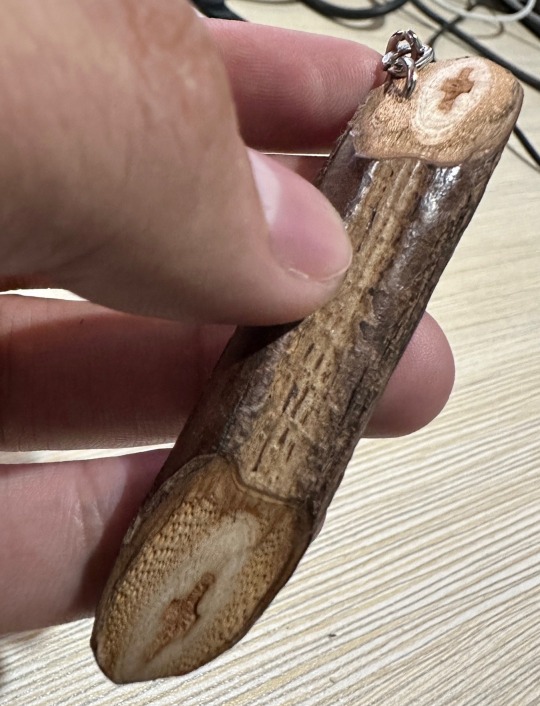
#travel#Philippines#insta360#guimaras#visayas#photoshop#trappist#monastery#monk#monks#old church#Youtube
1 note
·
View note
Photo

Just a few of the books in my library written by a certain Thomas Keating. Hard to believe it’s been almost four years since he left us. But what a gift to have had his widom, humor and insight to help us on our collective and individual spiritaul journeys! Thanks to Crossroad Publishing, Bloomsbury Publishing, and Lantern Publishing (distributed by Red Wheel Weiser) for making these amazing books available. PS. Do you see the cat’s paws? That’s Little Mama, who was “helping” me with my photo shoot. #ThomasKeating #ContemplativeOutreach #CenteringPrayer #prayer #silence #wisdom #books #bookstagram #Trappist #monks #Cistercian #monasticism #Christianity #Catholicism #prayer #meditation #contemplation #centering #God #mystical #mysticism #contemplation #spirituality @redwheelbooks @bloomsburypublishing @lanternpm @contemplativeoutreachltd (at Clarkston, Georgia) https://www.instagram.com/p/Ci8lsxeunZq/?igshid=NGJjMDIxMWI=
#thomaskeating#contemplativeoutreach#centeringprayer#prayer#silence#wisdom#books#bookstagram#trappist#monks#cistercian#monasticism#christianity#catholicism#meditation#contemplation#centering#god#mystical#mysticism#spirituality
0 notes
Text
I’ve found that malleability over the years where I once found hate, cobbling a faith together from a variety of sources: affect theorist Lauren Berlant; sci-fi author Octavia Butler (and her emergent religion of Earthseed); Episcopalian priest Pauli Murray, Trappist monk Thomas Merton, Quaker Bayard Rustin, Zen Buddhist Rev. angel Kyodo williams, and Dorothy Day. I have spent the last decade moving between faith spaces, queer spaces, and organizing spaces, watching the divisions between them melt away. What I once saw as contradictions that could never be resolved now look more like a modern theology for and by LGBTQ+ people pushing for a different world. Long before Javelin, Sufjan Stevens embodied that very promise: that queerness and divinity could coexist and thrive. Being gay and being into God never had to be a binary choice.
[...]
In Sufjan’s essayistic liner notes for Javelin, he beautifully, confoundingly explores his own faith crises, the experience of sight, and his understanding of God. “I was once again myself waiting to happen again and again and again and again and again ��� until the end,” he writes. This latest batch of words from the artist, both written and sung, feel very much like an outpouring from someone who is still here, despite it all, trying to reconcile a heart full of love with an often cruel world. As we try to continue living past the initial shock of how badly a bigoted world want us dead, we will keep losing the good ones, again and again. But there is more for us who are still here in the struggle. As Berlant wrote just before their passing, “Once you let in the deaths, all that follows is life. A thing to be used.”
289 notes
·
View notes
Text
You know what, I want to get in on these Jean-Paul Valley lives AUs. Building off ideas from @captainragtag and @tallochar in this post.
The way I'd do this is we start by still having Jean-Paul die of Azrael disease or whatever at the end of his solo. Idk, I’ve never gotten all the way to the end.
We then bring him back like three months later in a wild Robin arc written by John Lewis probably in which Tim stumbles across a secret Order of St Dumas lair where they have just resurrected JPV using a St Dumas themed knock-off lazarus pit that they stole from Ra’s al Ghul.
After beating up the Order of St Dumas with Azrael, Tim dumps him at, hmmm, idk, let’s go with the Trappist Abbey of Gethsemane over in Kentucky where he can recover from the system among a bunch of old monks who spend their days in prayerful silence and make fudge.
JPV can also impress/horrify them with all of the absolutely wild fringe theology of the Order! Does the Order of St Dumas even have the Eucharist?
(I mean probably, since I think their origin was from the crusades, but I don’t think this has ever come up in comics…)
Anyway we proceed through War Games and Identity Crisis up until the point where Tim’s dad dies and he’s like, clearly I need a fake uncle instead of being adopted by Bruce.
Only instead of hiring an actor, he’s like, I know a guy who owes me a favor and is also in on the secret so I don’t need to hide being Robin from him
So he grabs JPV from the Abbey and rechristens him as his Uncle JP Drake.
(Jean-Paul probably comes back from the abbey being drawn with a tonsure because even though that’s not really a thing anymore because that’s how you know he’s been hanging out with monks.)
(Also I think he deserves a stupid hair style)
Bruce is like, man, who know Tim had this Uncle who looks vaguely familiar. Well, must be the family resemblance.
Jean-Paul looks exactly the same except with a stupid haircut and also possibly an eye color change from the knock-off lazarus pit.
Bruce also doesn’t know that Jean-Paul got resurrected because Tim didn’t tell him.
And then, you know, eventually he figures it out and can brood over the fact that Tim chose Jean-Paul Valley over him.
And that way Tim and Jean-Paul have built up a kind of positive relationship that we can then use to lead into the Battle for the Cowl and Brucequest AUs that other people have proposed.
#jean paul valley#tim drake#jpv lives au#carthago delenda est#dc#bats + birds + affiliated#dennis o'neil's poor little meow meow
84 notes
·
View notes
Note
Thanks to you I recognized San Rafael Arnaiz’s name in a book.
*tearful smile*
I just love him so much.
For those who don't know him, St Rafael Arnáiz was a trappist, from Spain, who died at a relatively young age, of diabetes, around the time of the Spanish Civil War.
I found him -or he found me- at a very sad time in my life, that because of [PERSONAL BACKSTORY I'M NOT COMFORTABLE SHARING HERE], had me very desperate and despondent thinking I was "nothing" and that my life was "broken", that everyone had a neat little path and place in the world, and that I had missed my train to my own.
I did find some consolation in St Benedict Joseph Labré, but then, he was also somewhat a figure of legend: desiring for long the monastic life, being assaulted by scruples every time he tried it (probably also OCD and anxiety), he then dedicated most of his life to being a pilgrim, constantly going back and forth to places of pilgrimage, begging, taking letters from one monastery to another, etc, etc. But I could never become that.
The thing with St Rafael is that his journey is so real, so small, so humble, and above all so honest and raw, reading his notebooks is a very cathartic experience. His story starts like so many saints stories, with loving family and miraculous recovery from illness in childhood, a brilliant career in the world as an architect being left behind for the austere and secluded life of a trappist monk... and then he gets sick. And his whole life crumbles around him. He's handed a death sentence, left without direction, in the middle of a war-torn country. And so he goes through these harrowing experiences of having to tear himself from the trappa and then from the world and back again, while feeling at home nowhere, carrying the fatigue and the thirst and the irritability of his (then) chronic, terminal illness... and then he returns to the trappa one last time, and he live a little while, and then dies.
In appearance his life is a tragedy and a failure... and yet there's such a light in it. Not in terms of a forced cheerfulness and grand declarations of deserving pain and embracing expiation... when he suffers he suffers and he complains, and he tries again, and he finds joy in small things, and his mood changes several times in one day, from feeling the most miserable idiot, peeling turnips in the cold, to the mental image of turning Heaven into a farmer's market and laughing when thinking of seeing Christ and the saints and himself surrounded by baskets and baskets of prepared fruits and roots and veggies.
Bottom line: his life mattered, obscure and "failed" as it was. A life doesn't need to be triumphant to matter, and a person doesn't have to reach or perform the extraordinary or the expected to be lovable and loved and mourned and remembered.
Some of his art:


The man himself:
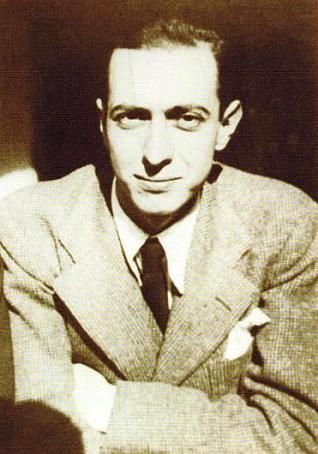

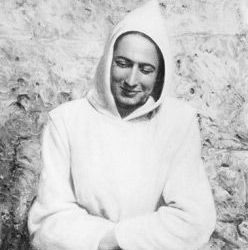
And that's why I picked him for my Confirmation saint, because I felt understood, and I understood that my life was worth it, wherever it led me in the end.
56 notes
·
View notes
Text


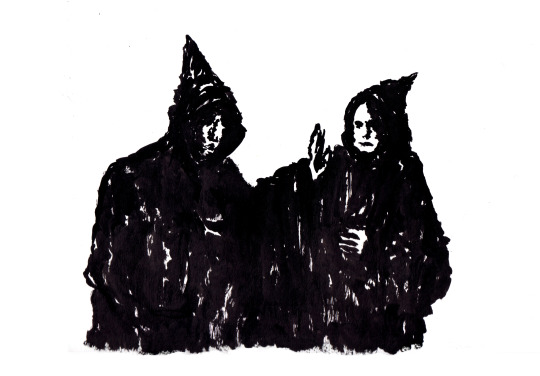


Trappist monks of Mariawald Monastery, 1959. Ink on paper.
#ink and brush#traditional art#monks#catholic#catholiscism#prayer#monastery#ink drawing#black and white art
9 notes
·
View notes
Text
I really wish u didn’t have to compromise urself to live in the world. I would really like to live with trappist monks and help them keep bees and tend the garden and sell their wares at the market. I’d help one of them with their trappist monk newsletter and they’d give me my own desk to work on my graphic novel.
19 notes
·
View notes
Photo
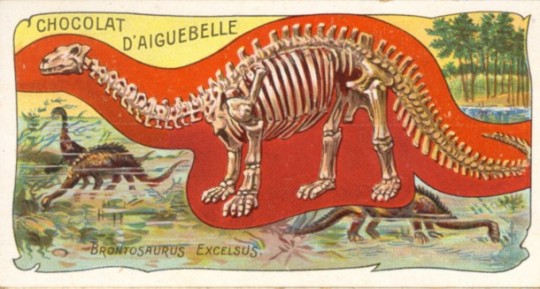
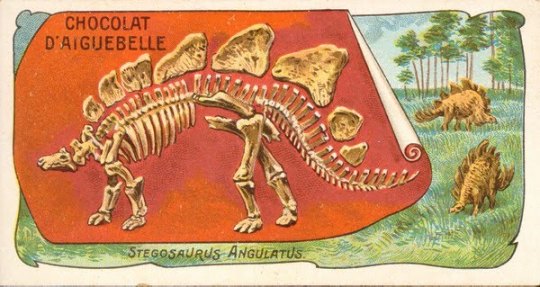

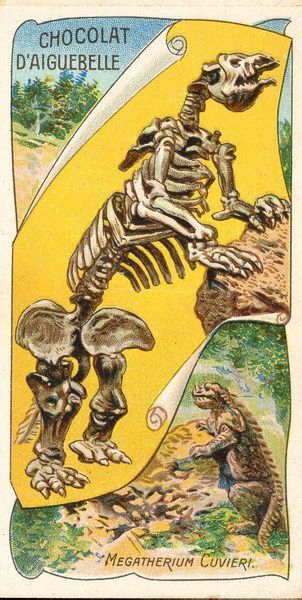

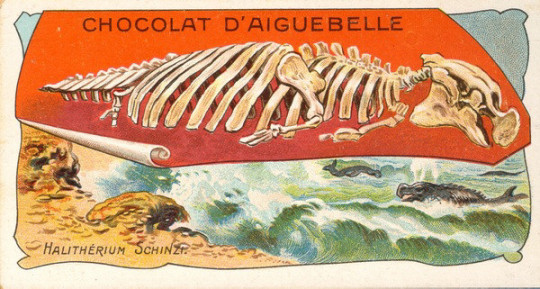
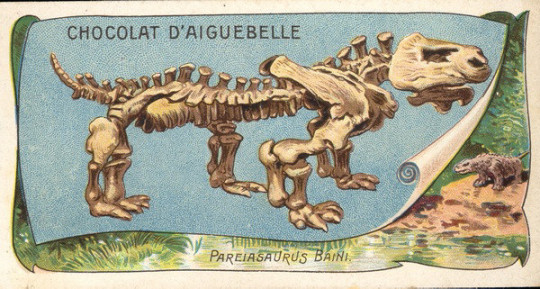
A chocolatier originally founded by Trappist Monks, Chocolat D’aiguebelle got famous in 1905 because they started including color cards of dinosaurs and other prehistoric creatures (as well as sports stars) with their chocolate. People would buy more chocolate than they needed, just to get all the dinosaur cards.



In addition to dinosaurs, they also included maps of exotic journeys. So, it wasn’t just that you were buying a chocolate bar (you could get that anywhere), but a little adventure daydream, and it hits the part of the human brain that urges obsessive collecting. For many people, they feel incomplete without a whole set. For 1905, that’s fiendishly clever marketing....downright diabolical.
344 notes
·
View notes
Text
A load of Porkies: Verlaine’s poetry and the French resistance on D Day 1944

Les saglots longs
Des violons
De l'automne
Blessent mon coeur
D'une langueur
Monotone.
- Paul Verlaine, Chanson d’automne (1866)
6 June 1944 marks the commemoration of the historic D Day landings in Normandy. Every year I exchange messages with family members, friends, and also some of my army veteran comrades with whom I served in the past. The simple messages of remembrance are a reminder to us of the sacrifices made by British and the Commonwealth, American, and the French on that fateful day when Allied forces stormed the beaches on Normandy.

I remember receiving one post from an ex-veteran friend who flew with me. It was a picture of a local delicacy, Lincolnshire Chine, a traditional dish of cured pork and parsley only made in Lincolnshire, and a cryptic message underneath, ‘chanson d’automne’.
My friend is too witty for his own good sometimes and even I was stumped. He had read modern languages at Oxford and so was always prone to quoting French poetry at every opportunity, no matter how inappropriate the situation - like the time we were fortunate to have avoided a rocket attack from the Taliban but for some cool headed piloting and as we took a breather to thank God we made it out he bursts into poetry. He was (and still is) ferociously clever but wears it lightly behind his amiable character. It’s not surprising that our senior officers didn’t warm to his dry wit in the officers mess as he often lampooned the more boorish of the officer class that passed through our mess as guests. At heart he was a farmer and he longed to go back to his family farm lands in Lincolnshire after his time was up flying helicopters in the British army.
I nicknamed him Lucy after the great Roman patrician, soldier, and statesman, Lucius Quinctius Cincinnatus. Cincinnatus was the outstanding Roman military leader who displayed humility, loyalty, and modesty. At the height of his power and fame he displayed the highest civic duty by giving up everything to go back to his simple farm life - which in time became the Roman civic ideal. I still think the nickname suits my ex-comrade in arms very well.
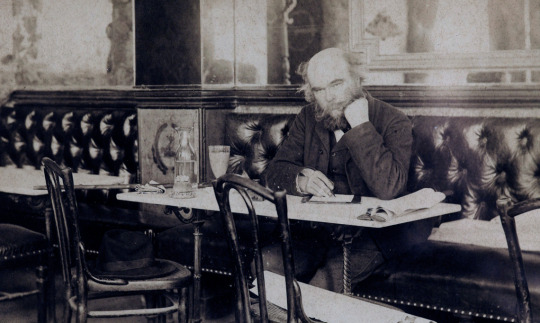
Drinking wine gives me moments of clarity and it slowly dawned on me what his cryptic message had meant.
Chanson d’Automne (1866) was a poem by the celebrated French poet, Paul-Marie Verlaine. His poem Chanson d’Automne (1866) is among the most beloved in French poetry. It captures his nostalgia for lost time in fewer words, and possibly just as well, as does Proust in six volumes.
Although it might have surprised Verlaine had he known it, the first lines of his poem were used by the British in the Second World War to signal the start of D-Day to the French resistance, which began the Allied invasion of Nazi-occupied France. D-Day (or "Operation Overlord") was a herculean planning task, requiring remarkable coordination both between the British, American, Free French, and Commonwealth armies, and with French resistance fighters on the ground, who were charged with helping aerial bombers disrupt German transportation routes, so as to impair the Germans' ability to send reinforcements.
But what had Paul-Marie Verlaine got to do with a side of cured pork from Lincolnshire?
Paul-Marie Verlaine lived and worked in Lincolnshire in 1875, teaching French, Latin and drawing at William Lovell's school. He had spent eighteen months in prison for shooting and wounding his lover Arthur Rimbaud and, when released in January that year, considered becoming a Trappist monk before deciding (the next best thing?) to become a school master in England. He came to London, registered with an employment agency and was soon heading north to this remote and, on the face of it, inhospitable backwater. Verlaine then spent a year as a schoolmaster in the village of Stickney, just north of Boston, Lincolnshire, in the mid-1870s and it is said that he became enamoured with this Lincolnshire delicacy. Verlaine continued to search for stuffed chine as he journeyed around Britain, but as is still the case today, he failed to find it outside Lincolnshire.
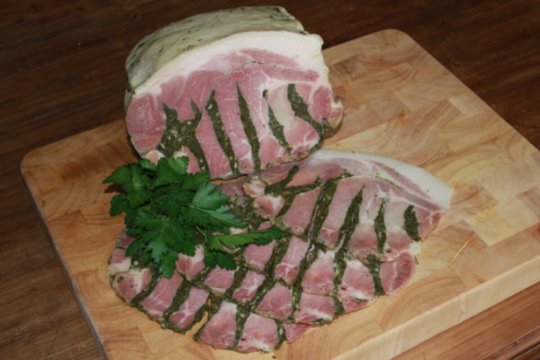
Unless you’re from Lincolnshire then the chances are you’ve never heard of stuffed chine. Unique to Lincolnshire, stuffed chine is a traditional dish made with cured pork and parsley. Once a county staple, its popularity has declined over the years as the younger generation looks to more modern cuisine and the older cuts are slowly forgotten. In the days before fridges and freezers, families would cure their meat to last them through the lean winter months. Each family would have a couple of pigs to kill - some of the meat would be salted and hung, and the rest used fresh.
Communities were tightly knit and there was often a friendly agreement between neighbours to stagger their kills and share fresh meat among the families, who then reciprocated when they in turn killed their pigs. Neighbours would pass on and receive this “pig cheer” all through the winter months while the pig killing went on, thus ensuring they always had fresh meat.
Once spring approached, however, they would look to use up some of the meat that had been salted and put away. Stuffed chine was traditionally served when the May Hiring Fair was in town (a kind of outdoor employment exchange, where people made themselves available for temporary work), and the largest chine was usually saved for Christenings – seeing a fresh row of parsley growing in a garden was often the sign that there was a baby on the way!
When the time came to use the chine it was soaked in cold water overnight, then carefully sliced from the spinal side towards the rind. Finely chopped parsley was packed tightly into the deep pockets in the flesh, then the joint was turned over and the process repeated on the other side. Next, the chine was very tightly wrapped up in muslin or an old pillowcase and simmered until cooked through. The cooked meat was left to cool still wrapped in cloth in order for it to set. Once completely cooled it was unwrapped, sliced thinly and served with a sprinkle of vinegar to cut through the fat.
Few butchers still use this traditional method as the cooked chine has to be carefully sliced by hand to avoid the bones, which due to the large bone-to-meat ratio makes it quite an expensive cut. For this reason many butchers choose to use collar bacon instead, which contains no bone and can therefore be sliced by a machine. There is something rather beautiful about the strips of pink salty pork divided by the flashes of punchy green parsley that immediately draws you in when you see it standing proudly in the butcher’s shop.
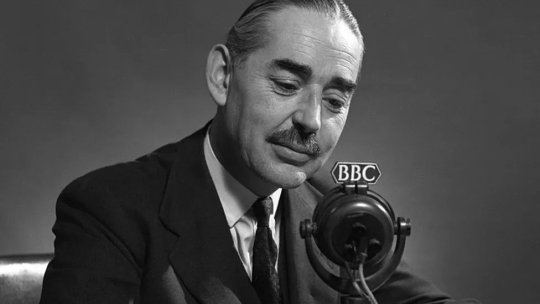
My ex-veteran friend’s witty post was a reminder how deeply immersed the British and the French (as well as the Germans) were in sharing a common currency of shared culture even in the bloody carnage of war. It was at 9.15pm French time on 5 June 1944, the opening notes of Beethoven's 5th, forming the Morse for V for Victory, sounded across the airwaves of BBC's Radio Londres into France. The speaker, Franck Bauer, read out personal messages that were known to individual Resistance groups in France. Hundreds of messages were sent out on the eve of the invasion, such as “Les carottes sont cuites” (The carrots are cooked), "La mélasse demain donnera le cognac" (Molasses tomorrow will bring forth cognac), and ““Jean a une longue moustache” (Jean has a long moustache).
But the most famous of all were verses from Verlaine's 'Chanson d'automne' destined for a Resistance group in central France. For the Resistance, these were a call to arms. All of these messages were picked up by the 15 Army listening post in Tourcoing, but although the Germans knew these messages were destined for the Resistance, they didn’t know their exact meaning. During the night of 5/6 June, the Resistance would carry out over 1,000 acts of sabotage, knocking out phone lines and blowing up railways, thus playing a vital and often overlooked role in the success of D-Day.

One of my favourite details of the whole D Day plan was how the Allies alerted the French that it was time to begin sabotaging rail-lines. On 1 June 1944, to tell the resistance to stand by for further alerts, the BBC transmitted the first three lines:
Les sanglots longs
Des violons
De l'automne
Per Arthur Symons' translation: "When a sighing begins / In the violins / Of the autumn-song".
The Germans wrongly believed that these lines were addressed to all Resistance circuits in France, and that when the next three lines were broadcast it would mean that invasion would follow within forty-eight hours. The lines were directed to a single Resistance circuit, Ventriloquist, working south of Orléans, instructing it to stand by for the next three lines, which would be the signal for it to carry out its railway-cutting tasks - in conjunction with the Allied landings.
Then, on June 5, to signal that sabotage efforts should begin, the next three lines were sent:
Blessent mon coeur
D'une langueur
Monotone
Symons: "My heart is drowned / In the slow sound / Languorous and long."
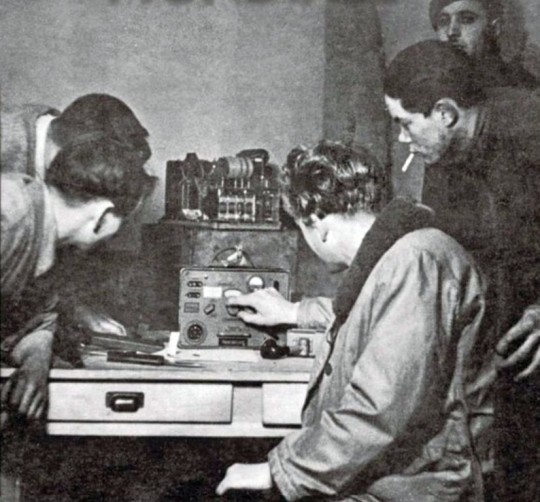
Both lines were intercepted by German forces, who took them as significant but didn't take adequate action; for one thing, they overestimated the scope of the sabotage operations to come. The second three lines of the Verlaine poem were broadcast over the BBC to the Ventriloquist Resistance circuit, instructing it to act at once in carrying out its railway-cutting sabotage. The SS Security Service radio interception section in Paris heard this as it was broadcast.
Believing, rightly, that the broadcast of the section of the poem was related to invasion, but wrongly, that it was an Allied call for railway sabotage throughout France, the Security Service immediately alerted the German High Command in the West.
An hour later, the German Fifteenth Army warned its various corps that intercepted messages pointed to an invasion within forty-eight hours (the parachute landings were fewer than three hours away). The German force responsible for most of the imminent assault area, the Seventh Army, which had received too many false warnings in the past, took no action.
The combination of airstrikes and ground sabotage proved extremely successful, especially as they wound up forcing the Germans to cross the Seine via ferry. The Germans ended up sending two panzer divisions all the way from the Russian front to fend off the invasion, but because of sabotage and bombings, it took less time to travel from the eastern front to France than it did for them to proceed from eastern France to Normandy.
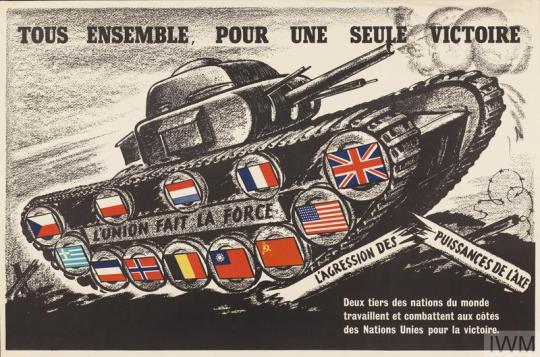
This is a good time as any to also point out at the Allied invasion of the Nomandy beaches would not have gone as well as they did without the help and support of the French themselves. I think there has been a skewering of perceptions that the D Day landings and the subsequent liberation of France was purely due to the Allied forces. What gets overlooked is the bravery and courage of the home grown French Resistance that played a crucial part also.
Truth be told as Allied soldiers stormed the beaches of Normandy on D-Day, 6 June 1944, the French Resistance were paving the way for their arrival. The French Resistance, the covert volunteers who had been struggling against the Nazis since 1940, leaped into action. They put their lives on the line as at no other time in the Second World War, risking everything to help the professional soldiers. This was their chance to liberate their country, and they seized it with both hands.

The French Resistance first emerged following the fall of France in 1940. With the nation’s armed forces shattered, some French people fled to Britain to remain free and continue the war. Most others bowed, with varying degrees of willingness, to the occupiers and the collaborating Vichy regime. But a few took another path, forming cells of spies and guerrillas who kept the hope of a free France alive. They provided intelligence to the Allies, sabotaged German facilities, and smuggled downed airmen and escaped POWs to safety.
The risks were incredibly high, and many Resistance members met horrible deaths at the hands of the Nazi regime. But their numbers kept growing, and by June of 1944, 100,000 Resistance members were waiting to rise up.
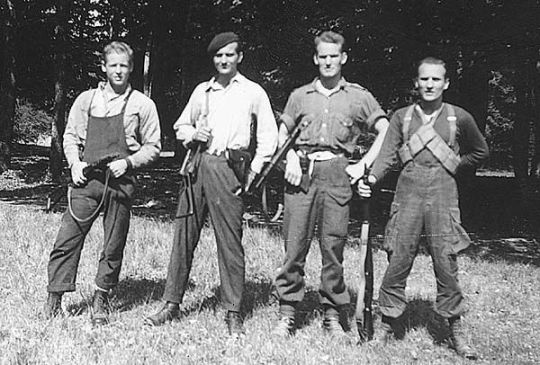
From the start, the Resistance had received support from elsewhere in the Allied camp. Britain’s Special Operations Executive (SOE), America’s Office of Strategic Services (OSS), and the exiled Free French forces under General de Gaulle had all made efforts to strengthen the volunteer force. They had forged connections with existing Resistance cells, fostered the growth of new ones, and provided them with supplies.
Perhaps the most important support the Allies gave came in the form of radio sets. These allowed the Resistance to more effectively coordinate with the rest of the Allies and with each other. Central to this was Radio London, a propaganda station the Allies used to keep hope alive in Europe. By transmitting pre-arranged code phrases in the personal messages part of its broadcasts, Radio London let Resistance members know about specific events, such as supply drops.
Immediately before D-Day, the Allies sent in the Jedburgh teams; three-man groups of Allied soldiers who were parachuted into France with radio sets. They joined up with Resistance cells, supporting them in their work and bringing them under Allied military leadership.
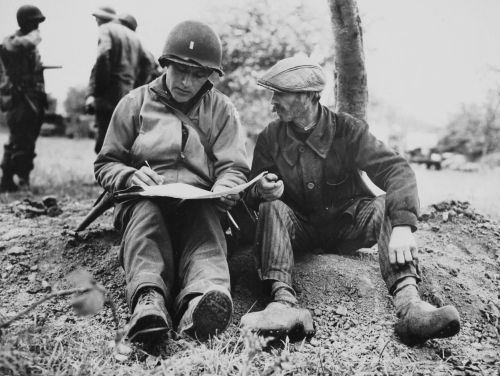
The Americans and British couldn’t afford to entirely trust the Resistance or even the Free French. Therefore, they kept details of the plans for D-Day from these critical allies until the last minute. In the lead-up to D-Day, signals told the Resistance that something was coming. They were encouraged to launch attacks on specific types of targets to prepare the way. At the start of June, a signal told them that the invasion was imminent, but when and where remained a closely guarded secret.
The Resistance carried out several distinct but related operations around D-Day:
• Plan Vert – sabotaging the railway system.
• Plan Tortue – sabotaging the road network.
• Plan Violet – destroying phone lines.
• Plan Bleu – destroying power lines.
• Plan Rouge – attacking German ammunition dumps.
• Plan Noir – attacking enemy fuel depots.
• Plan Jaune – attacking the command posts of the occupying forces.
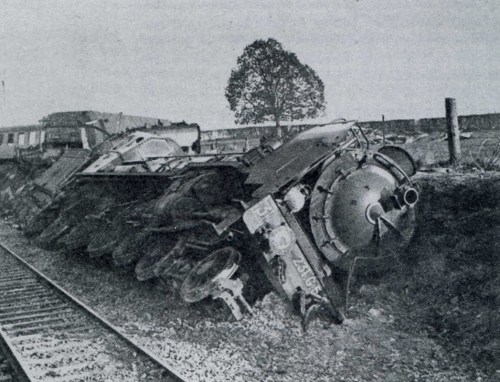
Some of these plans went active in the weeks leading up to the invasion. Plan Vert was particularly effective. Together with an Allied bombing campaign, the Resistance destroyed 577 railroads and 1,500 locomotives, three-quarters of the trains available in northern France. As part of Tortue, they also destroyed 30 roads and, again with British bombers, 18 of the 24 bridges over the northern stretch of the River Seine.
These attacks on the transport network were crucial to the success of D-Day. With trains out of action and roads ruined, the Germans struggled to get reinforcements to the front. The work of the Resistance crippled any potential for a significant counter-attack.
So on the night of 5 June 1944, when the crucial message arrived from Radio London, they knew attack was coming and more importantly they were ready.
This is what they waited for since 1940, it was time for for Plan Violet. Across the country, they sprang into action, cutting phone lines and attacking communications centres. 32 telecommunications sites were destroyed in these attacks.

Emboldened by the Allies’ arrival, many Resistance cells went on a war footing. They ambushed German troops heading for the front. In some towns and villages, they killed or drove out the occupying authorities.
Close to the Allied landings, some of these operations were carried out in coordination with the SOE and Jedburgh teams, or with paratroopers who had landed behind German lines. As the regular forces advanced, the Resistance rose up to help and to punish the occupiers who had oppressed them for the past four years.

Unfortunately, this ended badly for some groups. Far away from the newly arrived armies, they lacked the support they needed to survive now that they had revealed themselves. Some of these groups were forced on the run. Others were killed weeks before the Allies could reach them. French leaders encouraged them to stand down and return to guerrilla operations until regular forces reached them, in hopes of saving lives.
Having understood the meaning behind my friend’s cryptic message of Paul Verlaine’s poem gave me pause for thought as I reflected on the bravery and the sacrifices made by all who took part in D Day, both on the beaches and behind occupied enemy lines.
The nature of war always reveals the true nature of those who fight. War, someone said, is not human nature, but a habit. We tell the dead to rest in peace, when we should worry about the living to live in peace.
So I messaged back to ‘Lucy’, my witty ex-comrade in arms, and quoted a stanza from Paul Verlaine well known poem, Crimen Amoris.
I knew ‘Lucy’ would understand that I understood his message on this most solemn of days to commemorate the bravery and sacrifices of the Greatest Generation through the prism of our own shared experience of war in Afghanistan:
Nous avons tous trop souffert, anges et hommes,
De ce conflit entre le Pire et le Mieux.
Humilions, misérables que nous sommes,
Tous nos élans dans le plus simple des voeux.**
Too greatly have we suffered, angels and men,
In this endless war between the Worst and the Best,
Humiliated, unhappy have we been
In darkling flights by the simplest vows addressed. ***
#essay#paul verlaine#verlaine#poem#D Day#DDay#Normandy#second world war#french resistance#british army#US army#invasion#allies#nazi germany#occupied france#france#french#war#sabotage#BBC london#violence#culture#personal
24 notes
·
View notes
Text
Spiritual Karma
Tuesday - January 30, 2024

All of us have levels of "spiritual karma;" lifetimes in which we were spiritually oppressed, or were the oppressor. Lifetimes in which we had ideas, perceptions and practices that were in direct conflict or opposition to the prevailing religious practice of the time. Whether you were a Buddhist Monk who thought differently about meditation, or a Trappist Monk who had different ideas about Jesus the Christ, you did so at great risk to yourself. Even in the sciences those who questioned established principles (i.e. Galileo and the Sun as center of the solar system) were branded as "heretical" or as a "nonconformist."
You are about to enter 26 days of clearing away - for good - a level of that karma as it relates to current relationships in your life. This could be a relationship with a spouse, friend, co-worker, employer, mentor or client that has its roots in some religious or spiritual karma. You are healing where those relationships in past lives hit a rough patch due to spiritual or religious reasons.
Think about your current relationships, and think about individuals in your circle who "trigger" or "provoke" you in some way that often you just can't explain. These relationships need healing so both of you can move into this new energy without all of the "baggage." The healing will more than likely be internal, something that happens quietly one day that only you know about. And you'll know, because it will feel like a burden has been lifted, a heavy weight put down.
The final layer of this karma - the karma that went out into the world - starts in May 2025 when Chiron moves to 25° Aries.
6 notes
·
View notes
Text
they should teach trappist nuns & monks to make videogames
6 notes
·
View notes
Text
«One of the added bonuses of visiting the Abbey [of the Genesee] was that the monks were on retreat and the retreat master was Fr. Simeon from the Trappist abbey in Spencer, Massachusetts. Fr. Simeon’s original name is Erasmo Leiva-Merikakis—a name that will be familiar to anyone who has read his masterful, multi-volume work on the Gospel of Matthew […] We were blessed with the opportunity to speak with Fr. Simeon for a couple of hours on Saturday afternoon in the sunny lounge area in the lobby of the main Abbey. What a joy to speak to a man whose life is a wonderful demonstration of how God often writes straight with crooked lines! Erasmo had joined a Trappist monastery in Georgia in the mid-sixties, but in his youthful naivete could not negotiate that vocational choice in the midst of the craziness of the post-Vatican II tsunami. So he left, got his doctorate at Emory, got married and had children. Along the way he developed professional connections with Hans Urs von Balthasar and a dynamic young Jesuit by the name of Fr. Joseph Fessio who was starting up this strange new venture called “Ignatius Press.” Erasmo became one of the primary early translators of Balthasar’s works into English as anyone who has read Balthasar in English will know. Indeed, at one point he had Balthasar in his home for dinner, at the behest of Fr. Fessio, during one of Balthasar’s rare visits to the United States. One has to understand what a vicarious joy this engenders in me. Think for one second what elation would be in the soul of Garrigou Lagrange had he had the opportunity to dine with Aquinas. Can you imagine the table talk? “So, Thomas, who is correct on the nature and grace issue? Me, or de Lubac?” The “respondeo” and “sed contra” would resonate in Garigou’s mind for a lifetime and beyond.
Eventually, Erasmo’s marriage dissolved after which he was granted an annulment and he joined the Trappists once again and was ordained a priest in 2013. I too have been “married” before and went through the annulment process and am now in a much more profound sacramental and vocational reality with my marriage to my wife Carrie, who also has a Ph.D. in theology and who is both my strongest supporter and my deepest and most trenchant critic. And so, both Erasmo’s life and my own gives vivid testimony to the fact that “second chances” are nothing of the sort, and represent in reality the Christian’s gradual deepening of his or her sense of vocational “mission.” Nothing that came before is wasted. Nothing was a “Mulligan” as they say of errant golf shots among friends. Regrets over poor decisions in our youth are a waste of time and are spiritually destructive. You are who you are because of the path you took, missteps and all, and all of it is why you are where you are right now, in the place you stand, and in the world you now inhabit. In other words, in the spiritual life, we are all nomads like Abraham, awaiting God’s call. George Weigel once told me and my colleague Rodney Howsare over a round of good Scotches after he gave a lecture at DeSales, that Pope John Paul never lived his life looking in the rear view mirror. The Gospel beckons us ever forward and once we put our hand to its plow “looking back” is no longer an option.»
— Larry Chapp: “Some Meditations on my Trip to the Abbey of the Genesee: Quo Vadis?”
2 notes
·
View notes